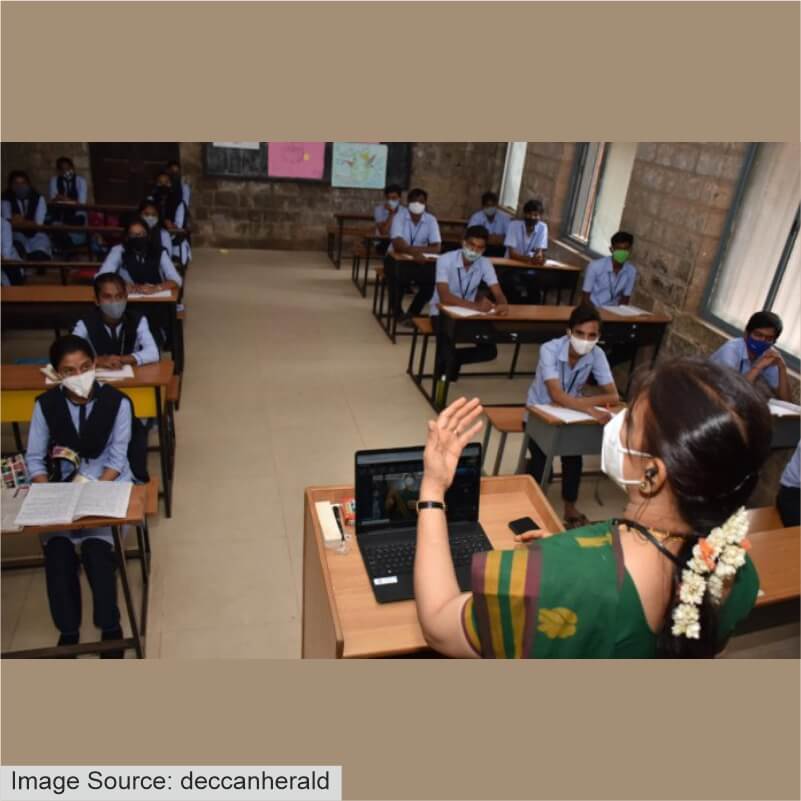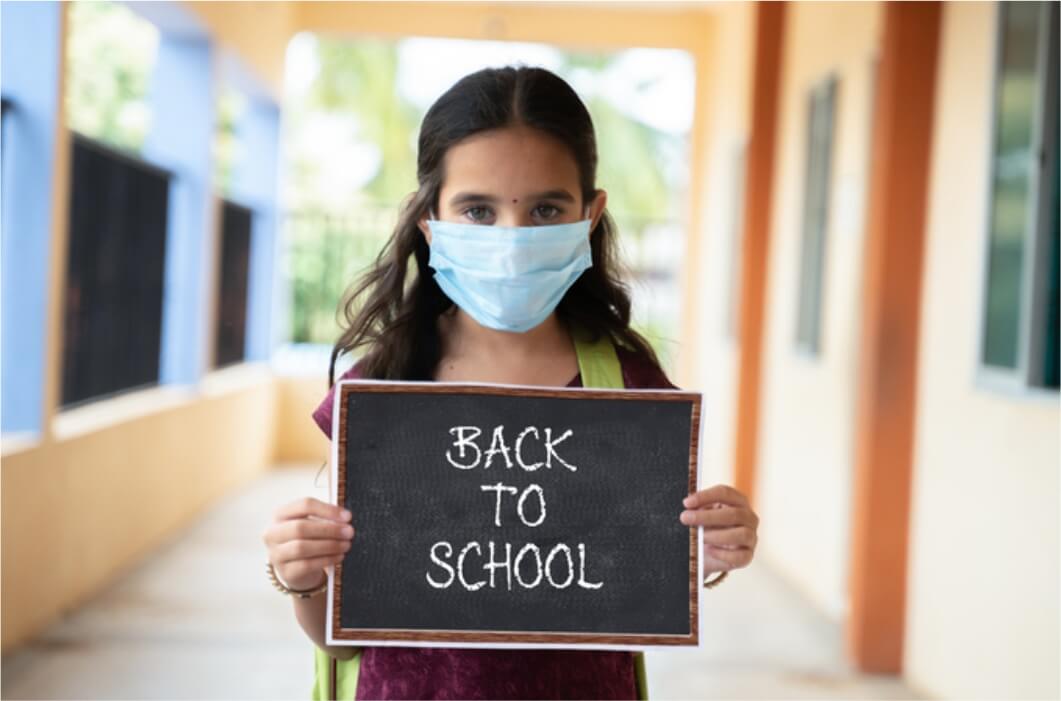Today, one of the most difficult issues parents are facing during the COVID-19 pandemic is keeping their children safe. With many schools around the country now offering in-person classes, one of the largest challenges parents are experiencing is keeping their children safe outside their homes. The COVID-19 pandemic isn't over yet, and additional strains of the virus (more infectious than the original) have been detected, increasing the existing concerns.
The state and central governments as well many parents across the country believe that offline classes can be more beneficial to students than online lectures. As we know, there are many limitations to online education . Learning through e-methods does not have as much impact as being in a classroom does. Not only does it help with academic development, but also social and emotional growth among children and teenagers.
As you prepare for your children's return to school, there are steps you can do to help them stay healthy and safe from contracting the virus. Fortunately, several recommendations can assist students and staff keep safe at school from COVID-19.
- Vaccination
- Face masks
- Social Distancing
- Washing hands and Sanitizing Regularly
- Cleaning and Disinfecting classrooms
- Identifying COVID-19 symptoms
The first and the most important step that can be taken towards normalizing life is getting vaccinated. Recently, the Indian government announced that from 16th March, children from the ages of 12 and above can get vaccinated.
Face masks can help prevent the infection from spreading to more susceptible people. The virus has spread more often in schools that do not mandate compulsory masking. While COVID-19 immunizations dramatically lower the chance of being severely sick or dying from the variations, persons who have been fully vaccinated can still become infected and spread the virus to others. One reason for this is that everyone above the age of two should continue to wear a mask that covers their nose and mouth. The circulating COVID-19 mutations are more infectious. Masks can also help prevent the transmission of other illnesses such as the common cold or flu.
The mask should be comfortable to wear and should be used continuously. With practice, encouragement, and role modeling from adults, most children with medical issues can wear face masks.
Inquire with your pediatrician if you need assistance selecting a mask or personal protection equipment that provides the greatest fit and comfort for a child's medical or developmental needs, or if you are concerned that a mask will not be able to be worn, you should consider all possibilities.

When your child is at school, teach him or her to stand at least 3 feet away from other students. Staying 6 feet apart is significantly safer for some persons (such as staff and instructors) or in specific locations (caféteria or auditorium).
Schools should urge parents and students to prevent crowding during pick-ups and drops and to discourage picking up by elder family members or community members if at all possible (i.e. grandparents).
Arrange school pick-up and drop-off hours differently (based on age group) to avoid big groups of children at one time.
Handwashing is one of the simplest, most cost-effective, and most successful ways to prevent germs from spreading and keep children and staff healthy. Explain to your child the significance of keeping their hands clean by washing them thoroughly with soap and water or using hand sanitizer. Coughs and sneezes should be covered with a tissue or stuffed into the inside of their elbow.
Teachers must lead by example in the classroom to ensure that students understand the steps they need to take to protect themselves and others from COVID-19.
Interfaces and things that are handled often, such as desks, worktops, doorknobs, computer keyboards, hands-on learning items, taps, phones, and toys, should be cleaned and disinfected daily. Surfaces and items that are clearly filthy should be cleaned right away. If surfaces or items have been contaminated with bodily fluids or blood, use gloves and take other normal measures to avoid contact with the fluid. After cleaning and disinfecting the area, remove the spill.

If any student appears to be sick, the school must take immediate actions to ensure that the virus does not spread among the others as well.
The most common symptoms are fever, cough, and tiredness. Other symptoms can include shortness of breath, chest pain or pressure, muscle or body aches, headache, loss of taste or smell, confusion, sore throat, congestion or runny nose, diarrhea, nausea and vomiting, abdominal pain, and skin rashes. Diagnostic testing can help determine if someone has COVID-19 after a recent known or suspected exposure to the virus.
Communities, families, and schools should coordinate to ensure that kids may remain physically together in the educational setting when they are required. COVID-19 vaccination should be given to everyone eligible, including children (when it is made available). To avoid illnesses, children should also receive the flu vaccination, as well as other recommended childhood and adolescent vaccines. When everyone contributes, the entire community benefits.
